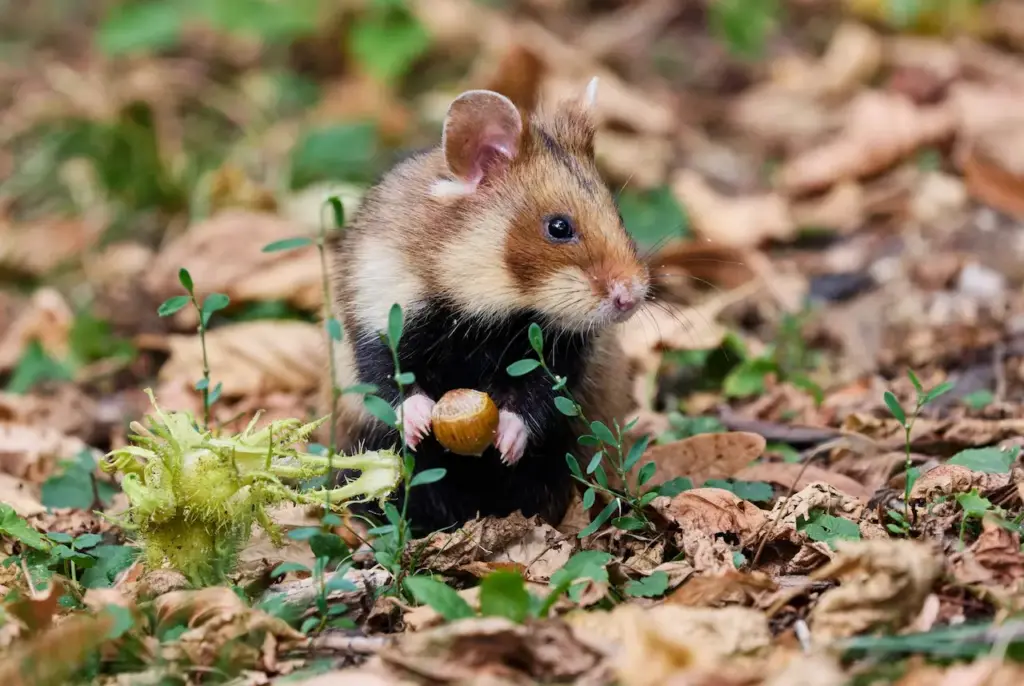How could the hamster possibly be an endangered species when we see them in every pet store we visit?
For one thing, there are around 25 different species of wild hamster. They occupy grassland habitats in Europe, the Middle East, and Asia. Populations of some hamster species are more abundant than others, and many species face serious threats due to human activities that affect their ability to find food and nesting sites.
[ez-toc]

For another, when conservationists talk about the possibility of a species becoming endangered or threatened, they are referring to its population and prospects in the wild, not in captivity. Many species of animals actually are extinct in the wild even though their domesticated numbers are huge—the dromedary, or one-humped camel, is one example. In fact, the hamster species that we see most often in pet stores, the golden, or Syrian, hamster (Mesocricetus auratus), is listed as a Vulnerable species in the wild on the International Union For The Conservation Of Nature Red List Of Threatened Species. This means that the golden hamster’s population is declining significantly in its natural habitat.
The IUCN lists two other hamster species, Brant’s hamster and the Romanian hamster, as Near Threatened, which means that their numbers are shrinking—although they are not disappearing quite as quickly as those of a Vulnerable species such as the golden hamster.
No hamster species is yet listed by the IUCN as Endangered or Critically Endangered, which are the organization’s most serious designations, and the ones that indicate that a species is fast approaching extinction in the wild. However, some hamsters are close to being extirpated—which means ‘regionally extinct’—in parts of their native range.

In addition to the IUCN’s assessments of the threats facing species across their entire native ranges, many individual countries, states, and provinces produce their own lists of endangered and threatened species. These national and regional assessments are important, because sometimes even an animal that is designated by the IUCN as a species of Least Concern can find itself in need of protection in one or more parts of its range.
One example of a species holding its own in many portions of its range, but facing grave threats in others, is the European hamster (Cricetus cricetus), also called the “great,” or “black-bellied,” hamster. This large (up to 10 inches, or 25.4 centimeters, long) hamster, whose native range includes most of Eastern and Western Europe, is officially designated as a species of Least Concern by the IUCN because, although it is slowly declining in number across most of its range, many populations remain reasonably healthy. However, in some countries to which it is native, the European hamster is in big trouble.
One place where the great hamster has been almost extirpated is in France, which has only a few hundred native hamsters remaining. There are so few French black-bellied hamsters left in the wild because much of their original habitat is being used by humans for agriculture, and has also been disrupted by roads and housing developments. In addition, in the past, people killed the animals for their fur, and to prevent them from eating crops.

Recently, the European Court of Justice ruled that France had not done enough to protect its wild hamsters, and said that the country would face nearly $25 million in fines if it did not begin using more hamster-friendly agricultural practices. For example, hamsters probably would do better if more fields in northeastern France were planted in grass and alfalfa rather than corn.
Conservationists estimate that around 800 wild hamsters remain in France. Although the number dropped to as low as 200 several years ago, and has therefore risen recently, European wildlife experts would like to see the animal’s population recover to around 1,500 in the French corner of its range. Having a larger hamster population in France would make it less likely that a disease or a single natural disaster would be able to wipe them all out.
Click here for further specifics on the European Court of Justice hamster decision against France.



